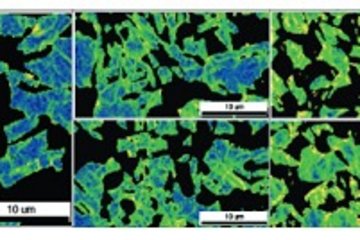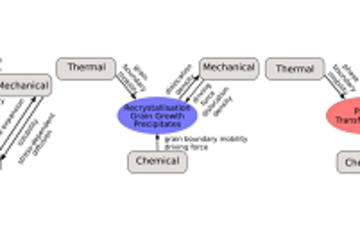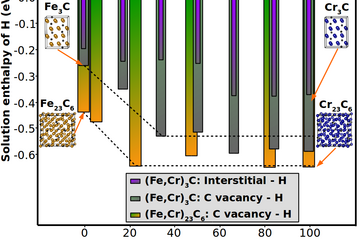All genres
1.
Journal Article
Interfacial segregation of carbon atoms: the competition between grain boundaries and phase boundaries. Scripta Materialia 268, 116842 (2025)
2.
Journal Article
Influence of symmetric and asymmetric rolling on texture evolution of work-hardened AA 5xxx aluminium alloy. Transactions of Nonferrous Metals Society of China (English Edition) 35 (1), pp. 30 - 44 (2025)
3.
Journal Article
Segregation at prior austenite grain boundaries: The competition between boron and hydrogen. International Journal of Hydrogen Energy 95, pp. 734 - 746 (2024)
4.
Journal Article
Corrigendum to "The brittle-to-ductile transition in cold-rolled tungsten sheets: Contributions of grain and subgrain boundaries to the enhanced ductility after pre-deformation" [Nucl. Mater. Energy 25 (2020) 100769]. Nuclear Materials and Energy 41, 101833 (2024)
5.
Journal Article
The Role of Dislocation Type in the Thermal Stability of Cellular Structures in Additively Manufactured Austenitic Stainless Steel. Advanced Science 11 (33), 2402962 (2024)
6.
Journal Article
Analysis of Crystal Defects by Electron Channeling Contrast Imaging (ECCI) for the Advancement of Structural Materials. Microscopy and Microanalysis 30 (Supplement_1), ozae044.131 (2024)
7.
Journal Article
A large-volume 3D EBSD study on additively manufactured 316L stainless steel. Scripta Materialia 238, 115723 (2024)
8.
Journal Article
Delineating dislocation structures and residual stresses in additively manufactured alloys. Acta Materialia 262, 119413 (2024)
9.
Journal Article
Dislocation-assisted particle dissolution: A new hypothesis for abnormal growth of Goss grains in grain-oriented electrical steels. Acta Materialia 258, 119170 (2023)
10.
Journal Article
Electroplasticity Mechanisms in hcp Materials. Advanced Engineering Materials 25 (18), 2201912 (2023)
11.
Journal Article
Hydrogen-induced hardening of a high-manganese twinning induced plasticity steel. Materialia 28, 101776 (2023)
12.
Journal Article
Combined structural analysis and cathodoluminescence investigations of single Pr3+-doped Ca2Nb3O10 nanosheets. Scientific Reports 13, 8055 (2023)
13.
Journal Article
Hydrogen/Deuterium Charging Methods for the Investigation of Site-Specific Microstructural Features by Atom Probe Tomography. Microscopy and Microanalysis 28 (S1), p. 1664 (2022)
14.
Journal Article
Thermodynamics-guided alloy and process design for additive manufacturing. Nature Communications 13, 4361 (2022)
15.
Journal Article
Hierarchical nature of hydrogen-based direct reduction of iron oxides. Scripta Materialia 213, 114571 (2022)
16.
Journal Article
Effects of Defect Density on Optical Properties Using Correlative Cathodoluminescence and Transmission Electron Microscopy Measurements on Identical PrNbO4 Particles. ACS Applied Electronic Materials 4 (4), pp. 2095 - 2100 (2022)
17.
Journal Article
Orientation, pattern center refinement and deformation state extraction through global optimization algorithms. Ultramicroscopy 233, 113407 (2022)
18.
Journal Article
In-situ nitriding of Fe2VAl during laser surface remelting to manipulate microstructure and crystalline defects. Physical Review Materials 6 (8), 085405 (2022)
19.
Journal Article
Development of a new, fully automated system for electron backscatter diffraction (EBSD)-based large volume three-dimensional microstructure mapping using serial sectioning by mechanical polishing, and its application to the analysis of special boundaries in 316L stainless steel. Review of Scientific Instruments 93, 093707 (2022)
20.
Journal Article
The role of Ca, Al and Zn on room temperature ductility and grain boundary cohesion of magnesium. Journal of Magnesium and Alloys 9 (5), pp. 1521 - 1536 (2021)











